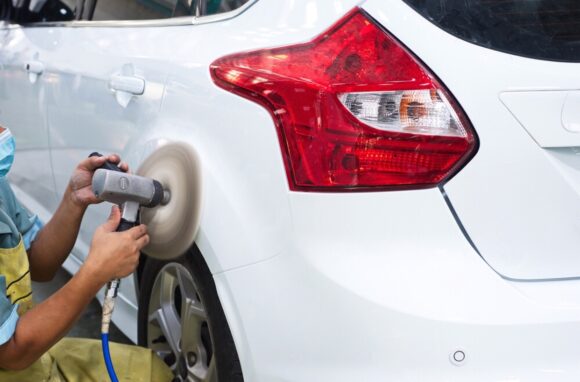Elevated prices for replacement parts and a shortage of technicians are among the factors that will likely offset any decrease in auto claim frequency caused by the surge in gasoline prices, according to a report released Monday by CCC Intelligent Solutions.
The report says historic data shows that rising gasoline prices have only a minor impact in vehicle miles traveled, which corresponds with lower auto claims frequency. When gasoline prices jumped 38.3% from February to July 2008, vehicle miles traveled decreased 1.9%. There were similar small declines during economic recessions.
Based on gasoline price estimates by the Energy Information Administration, total vehicle miles traveled in the US is projected to decline from 0.4% to 5.1% in 2022. Gasoline prices are projected to drop but remain elevated in 2023, leading to projected declines in vehicle miles traveled from 0.9% to 2.7%.
The CCC report says because of social-distancing measures introduced to slow the spread of COVID-19, many workers have relocated to suburban areas and to metro areas in the Southwest where public transportation is more limited. Unemployment is also at a historic lows, while a growth in e-commerce has shifted miles traveled to commercial vehicles from private passenger.
“The combination of these factors, as well as the relatively small decline in vehicle miles traveled during past recessions, suggest that high gas prices and a possible recession will likely have only a minor impact on miles driven and accident frequency the remainder of this year and next,” the report says.
The report, written by senior director of insight and analytics Susanna Gotsch, notes several trends that are pushing up claim severity.
Obviously, the 9.1% increase in the Consumer Price Index measured at the end of June will impact physical damage claims costs, the report says.
The auto industry, however, has been particularly impacted by soaring prices. Supply-chain constrictions made it difficult for manufacturers to meet pent-up consumer demand after COVID-19 restrictions eased in the second half of 2020. New vehicle sales declined to 15 million in 2021 and are forecasted to drop further to 14.4 million in 2022. That compares to an average of 17 million new vehicles sold from 2015 to 2019.
Automakers focused on using scarce semiconductor chips on their most profitable models. That drove the average manufactured suggested retail price for new vehicles to a new high of $45,000. The Consumer Price Index for new vehicles rose 2.4% in the first half of 2021, 9.2% in the second half and 12.4% in the first half of 2022, the report says.
Car buyers turned to used vehicles, leading to record sales of 40.9 million in 2021 — a 10% increase from the previous year. The CPI for used cars and trucks rose 20.7% in the first half of 2021, 32.1% in the second half and 25.8% in the first half of 2022.
“Tighter used inventories with healthy demand mean used prices will likely remain elevated for some time, even as year-over-year gains have slowed, and may even turn negative in the second half of 2022,” the report says.
The cost of replacement parts has also soared. The average price per part jumped 7.4% in 2021 compared to 2020 and ticked up another 6.4% in June 2022. Those higher costs combined with increasing vehicle complexity pushed repair costs up 10.9% in the second quarter of 2022 compared to the third quarter of 2021. That followed a 6.8% jump the previous year.
To make matters worse, a shortage of collision repair technicians has grown worse over the past two years. Repair shops say a technician shortage is the primary reason for longer backlogs of work.
That shortage led to higher labor costs. Average weekly wages for repair shop workers was up 7.5% in the fourth quarter of 2021 compared to the same period in the prior year. That followed a 6.1% increase in the fourth quarter of 2020 over the fourth quarter of 2019.
“With higher cost vehicles, parts, and labor, and not much if any reduction in claims, it’s likely our industry will continue to experience elevated loss costs for some time,” the report concludes.
Was this article valuable?
Here are more articles you may enjoy.


 Abbott Presses Congress for Shield Over Preemie Baby Formula Litigation That Could Cost It Billions
Abbott Presses Congress for Shield Over Preemie Baby Formula Litigation That Could Cost It Billions  NYT, Chicago Tribune Sue Perplexity AI as Copyright War Rages On
NYT, Chicago Tribune Sue Perplexity AI as Copyright War Rages On  Thailand’s Record Floods Paralyze Key Hubs for Tech and Car Parts
Thailand’s Record Floods Paralyze Key Hubs for Tech and Car Parts  Asahi Sales Drop Worsens as Cyber Hack Disruption Lingers
Asahi Sales Drop Worsens as Cyber Hack Disruption Lingers 